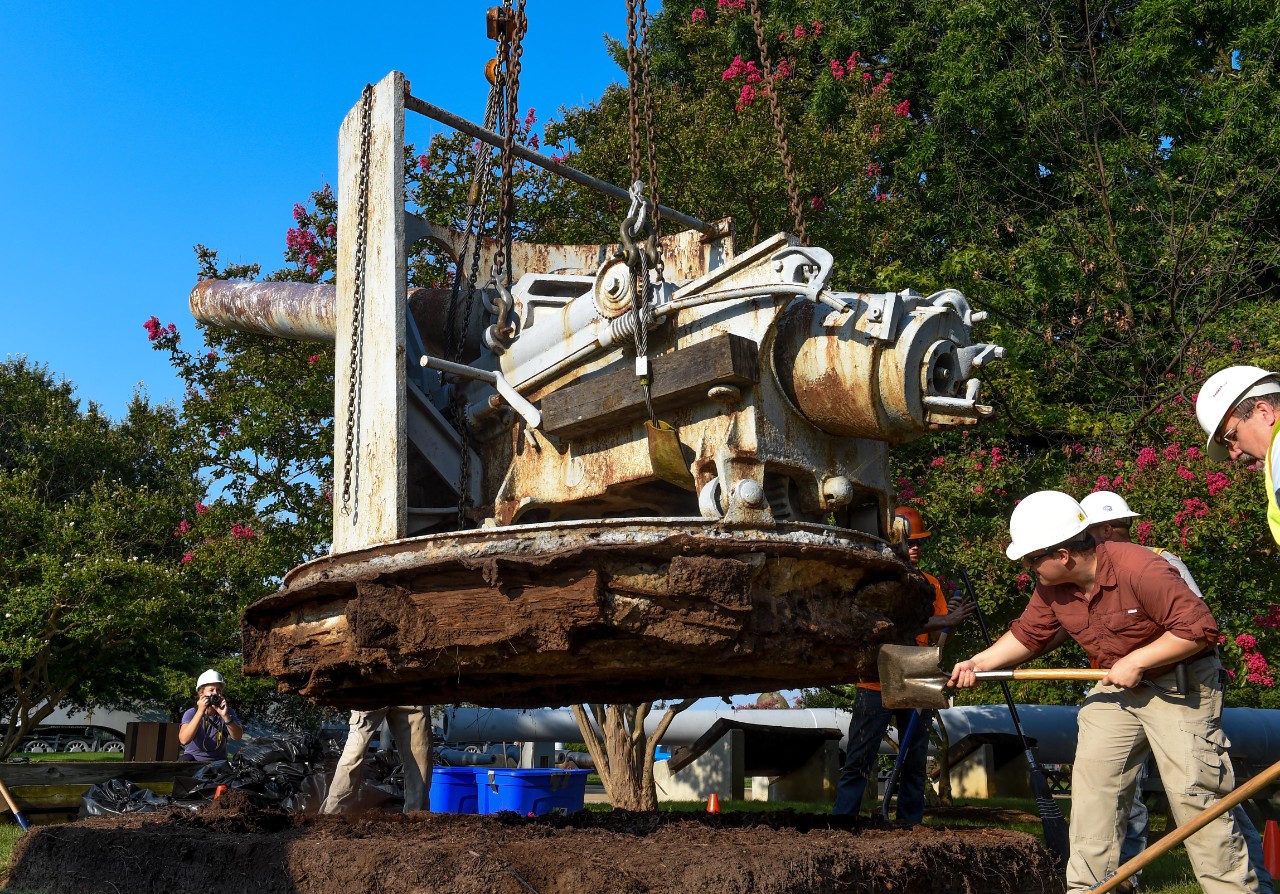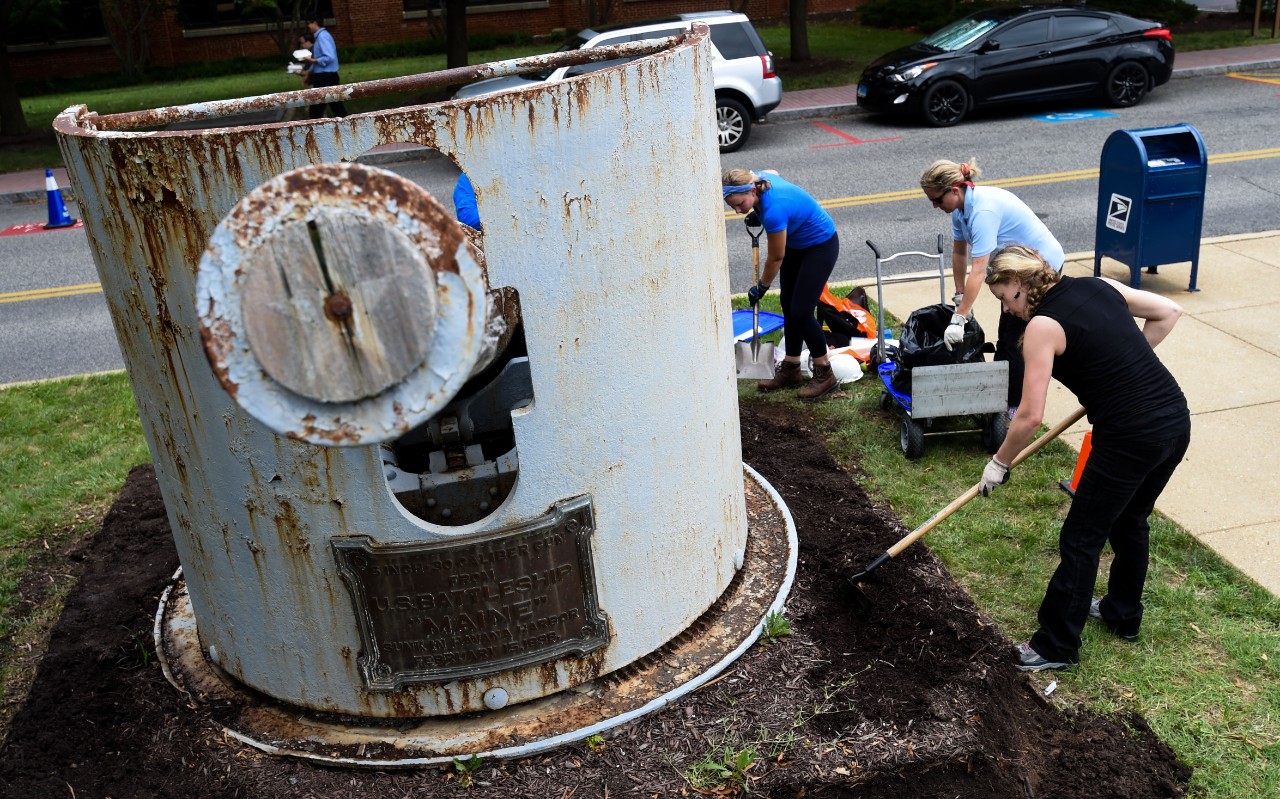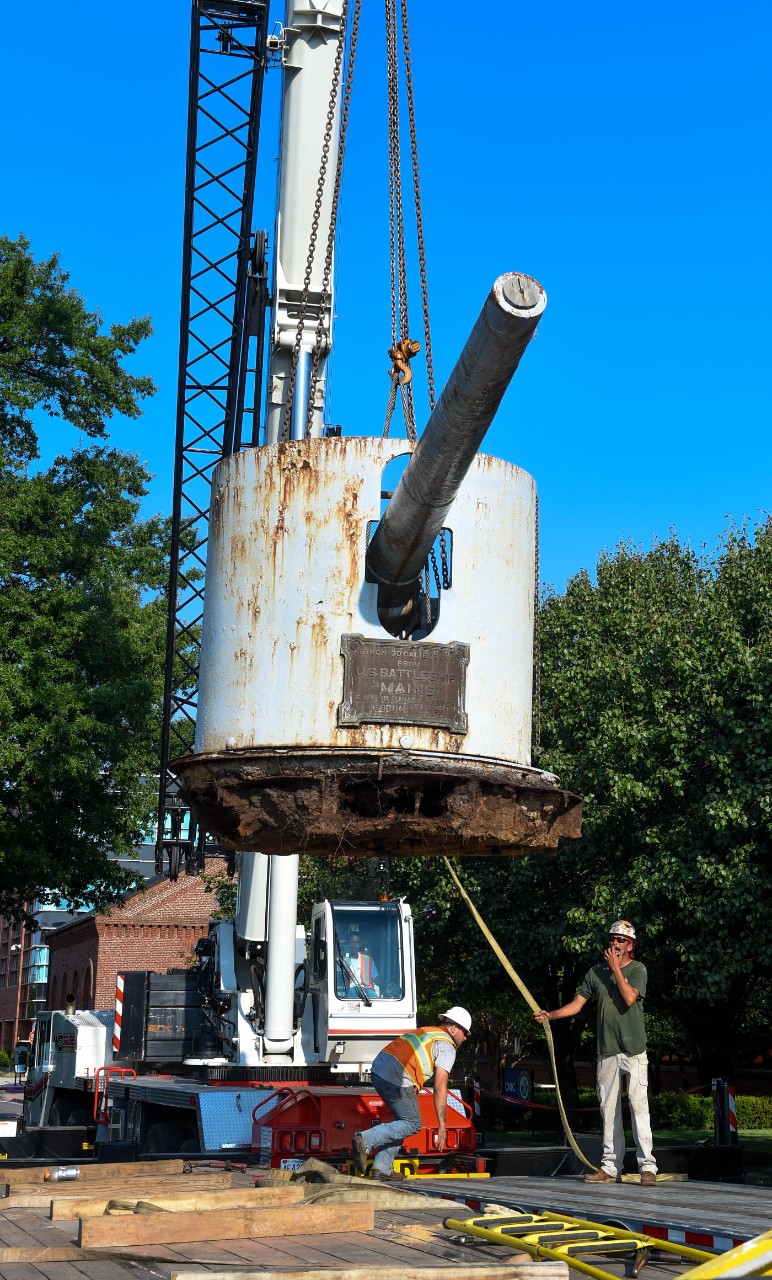By Mass Communication Specialist 1st Class Eric Lockwood,
Naval History and Heritage Command, Communication and Outreach Division

Conservators from the Warren Lash Conservation Center (WLCC) in Charleston, South Carolina, worked with the Naval History and Heritage Command to remove the gun for conservation.
“I think cultural heritage is like bringing history to the next generation,” said Stéphanie Cretté, the director of WLCC, “and conserving it is kind of like bringing an object to life for the next generation. I hope this is a full success, and we continue on with other conservation processes with the Navy.”
Planning to remove the gun from the Yard started in February of 2015. Environmental reviews, soil sampling, digging permits, training contractors in the specific work, safety reviews, reviewing hazardous material concerns and weight calculations were required to plan for the conservation of the gun.
“Its overall condition was very poor,” said Karen France, the head of NHHC curator branch. “It was obviously in need of conservation.”
The process started off by digging around the gun, seeing how far down it had settled, and how much concrete was present. The team from WLCC confronted a foot thick layer of soil that they carefully removed to disclose the underlying concrete base. The gun was craned onto a flatbed the morning of Aug. 6 for its long drive down to Charleston.
“This required collaboration between many different folks,” France said. “It’s a fairly complex evolution. We’re really glad it’s all finally come together.”
Now that it’s gone, the WLCC team will start arresting its condition issues. They’ll start off by removing existing paint, as much rust as is prudent, and inhibiting the extant corrosion. In short, they’ll be resuscitating it for future generations.

The whole process is expected to take anywhere from four to six months.
The Maine gun's story began in 1888 when the ship was commissioned, but the ship rose to prominence on the evening of Feb. 15, 1898 while docked in Havana harbor in Cuba. At 9:40 p.m. an explosion ripped through Maine’s hull, causing it to sink and killing 252 men immediately and 14 more, soon after.
After a month, a Navy board of inquiry came to the conclusion that the explosion was caused by a mine. Though the board fixed no blame, newspapers across the U.S. fed into public opinion that the Spanish government was to blame, causing an outcry of rage from the American people. "Remember the Maine!" would act as the catalyst that led the United States to declare war on Spain on April 21, 1898, starting the Spanish-American War.

The Naval History and Heritage Command, located at the Washington Navy Yard, is responsible for the preservation, analysis, and dissemination of U.S. naval history and heritage. It provides the knowledge foundation for the Navy by maintaining historically relevant resources and products that reflect the Navy's unique and enduring contributions through our nation's history, and supports the fleet by assisting with and delivering professional research, analysis, and interpretive services. NHHC is composed of many activities including the Navy Department Library, the Navy Operational Archives, the Navy art and artifact collections, underwater archeology, Navy histories, nine museums, USS Constitution repair facility and the historic ship Nautilus.


